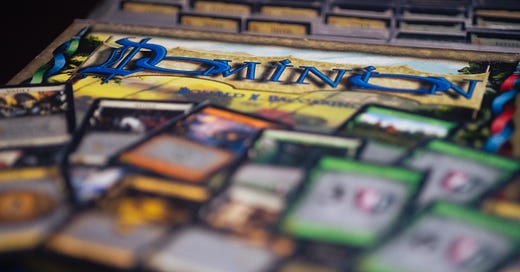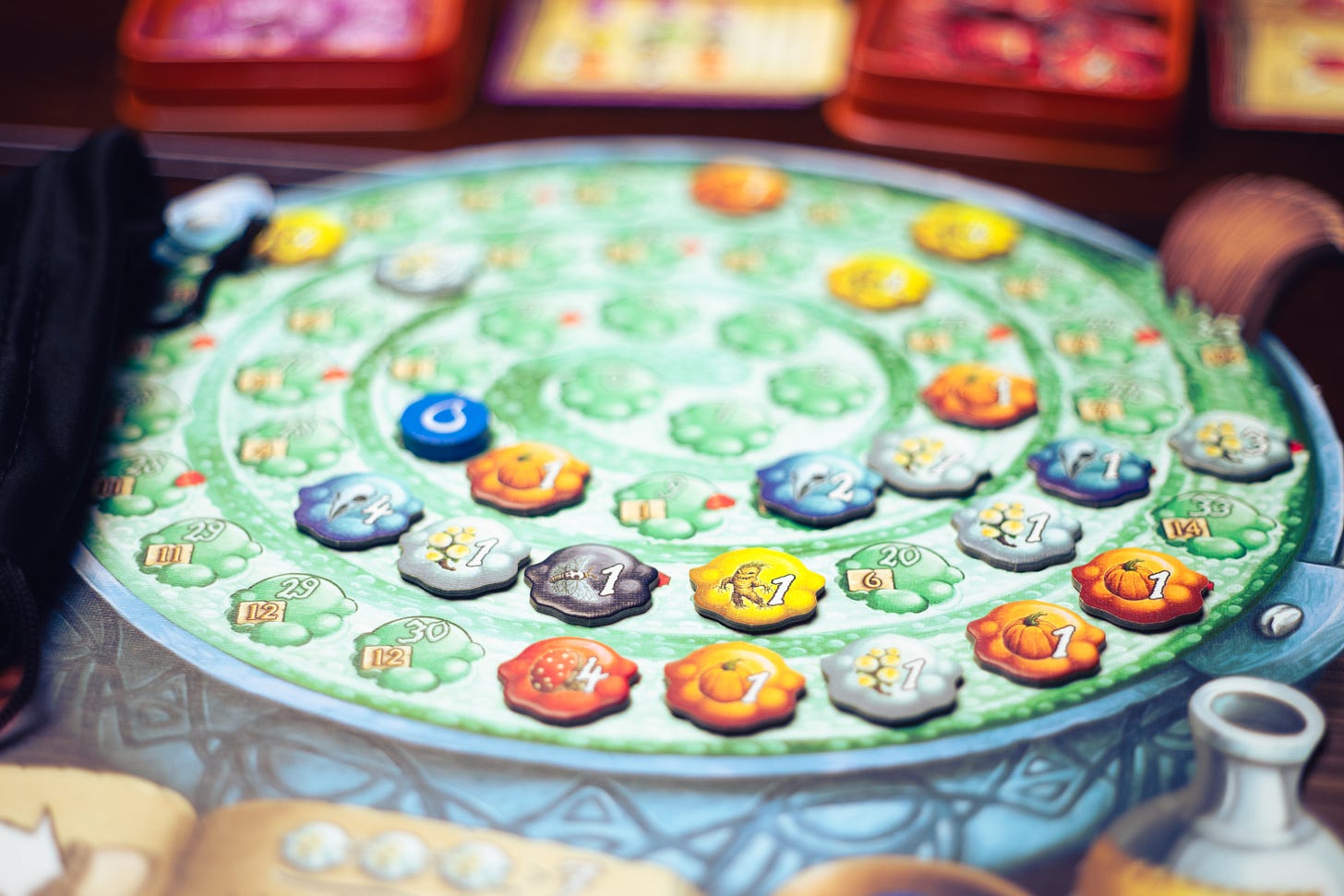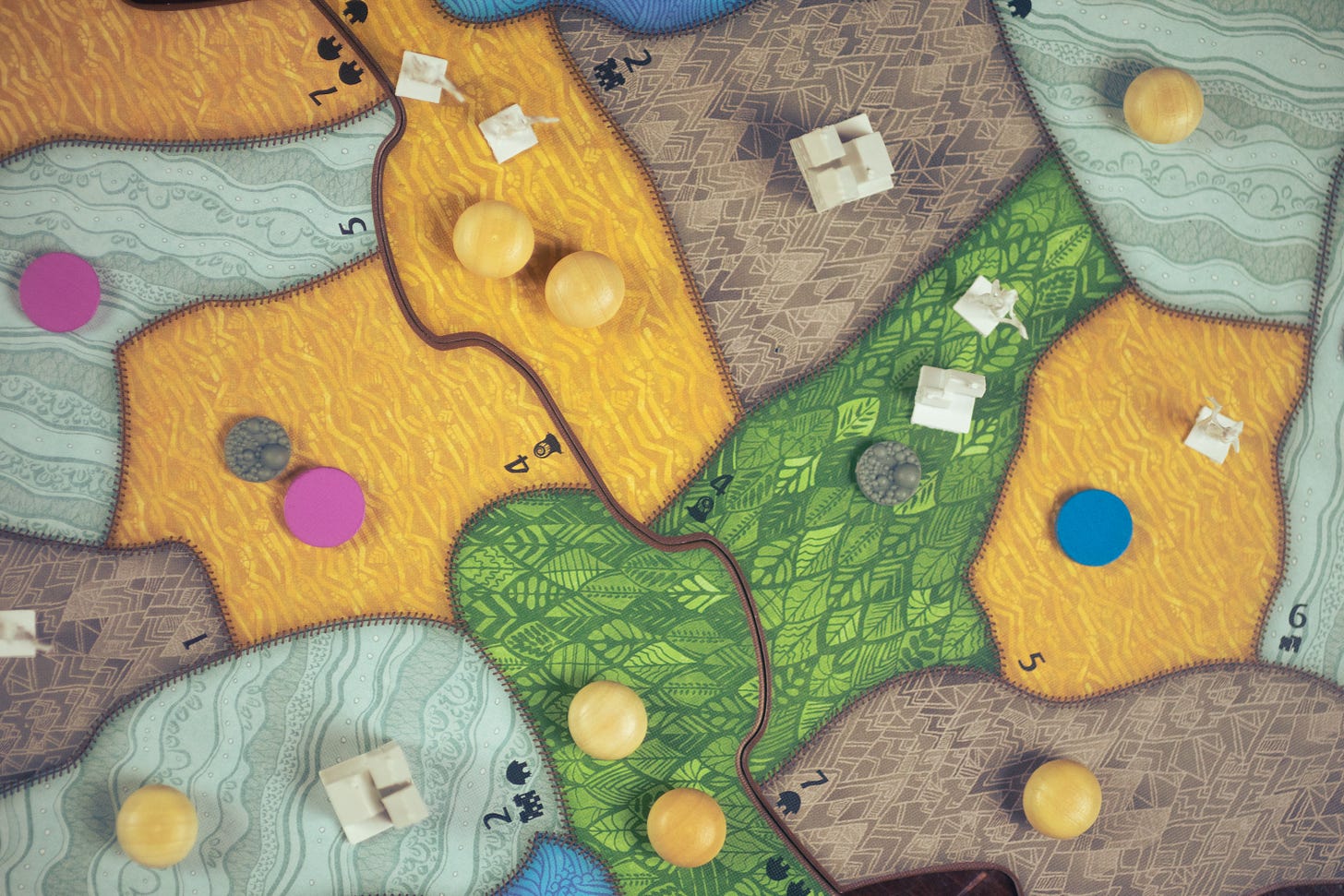Guiding newcomers into deck-building board games
There's a wide world of exciting deck-building games out there, but finding the right entry points for newcomers isn't always straightforward.
When you’re introducing new people to the depths of the board game hobby, you’re heaping upon yourself a surprising amount of pressure. You’ll probably be aiming to show them the best and the brightest, to really show all that board games has to offer.
Realistically, that’s not always the best idea. If you’re really into, say, worker placement games — say, Richard Breese’s Key games, like the perennially excellent Keyflower (2012) — introducing a newcomer to your favorite in the genre might put them on the back foot. There’s just a lot that’s built upon the structures of other great games, and while that’s absolutely one of my favorite things about board games, it doesn’t make it easier to truly get started. Few people are truly comfortable learning something they’ll be bad at, so you might want to consider starting somewhat simpler. That’s not to underestimate your friends and family, but to set them up for success.
Of course, if somebody seeks out a game and wants to learn it, and you have the privilege of helping them learn, then this all might go out the window. There’s no better game to teach somebody than the one they want to learn. I suppose I’m telling you to take all this with a grain of salt; you know your fellow gamers better than I do.
Today, we’re going to focus solely on deck-building (and its close relatives, pool-building and bag-building) games. Before we launch into some games, let’s talk about deck-building as a concept. It can be a bit confusing, especially if you’re playing with somebody who’s coming over from the world of collective card games, wherein you construct a deck, then play with that deck. A deck-building game takes that activity, the building of the thing, and wraps the whole of the game around the concept. You’ll add cards to your deck, which typically starts out quite small, and try to craft something more effective at the tasks of the game.
Last July, I wrote about how Dominion changed board games, which we can see statistically. I’ll link the post below.
Introducing your friends and enemies to deck-building games
There are so many incredible deck-building games out there, and if you’re playing games with somebody deep into indie video games, there’s no doubt that they’ll understand deck building on a high level. If you’re playing with that person, you don’t need my advice.
You could start with Dominion (Vaccarino 2008) as the undisputed classic or The Quest for El Dorado (Knizia 2017). There would be nothing wrong with either pick. Dominion is tried-and-true, but it’s a game where playing with newcomers and veterans can lead to runaway games — once you learn some key combinations, you’ll be head and shoulders above the competition. The Quest for El Dorado is interesting and relatively light, but it combines multiple other mechanics — and I’ve already got my multiple-other-mechanics deck-building game picked out.
Star Realms (2014) is a simple deck-building game, and the barrier to entry is pretty light. You start with a small deck of starships that will either give you money or give you firepower. Money lets you buy from the open market; firepower lets you attack your enemies. There are very few preset elements, and you’re not really restricted on what you can do, so long as your card gives you the money or firepower to do so. It’s not the deepest game, but it’ll get you started very much in the right direction. It’s also small and cheap, and that reduces the barrier entry just enough to be the first item on the list. Designed by Rob Dougherty and Darwin Kastle, illustrated by Vito Gesualdi, and published by Wise Wizard Games.
Want to go deeper down this path? Try…
Star Realms: Colony Wars (2015) or Star Realms: Frontiers (2018), both of which expand on the premise quite nicely. I’d like to try Star Realms: Rise of the Empire (2024), which puts a legacy spin on the game.
Slay the Spire (Dworetsky, Giovannetti and Yano 2024) takes the extremely well-regarded video game and puts it into the physical realm — and by all reports, it does it quite well.
Clank! (Dennen 2016) adds a bit of a press-your-luck idea to deck-building, and it’s built on a map. It’s graceful the way it handles everything.
Avatar: The Last Airbender — Aang’s Destiny (Marino 2024) tells the story of one of the great animated shows with a campaign and unlockable story elements.
Paperback (2014) combines word-building and deck-building, and for that, I love it. It takes a relatively straightforward deck-building approach, wherein you earn money playing words, and you can use that money to buy new letters, and it gives it a blast of life with rewards on those letters. Maybe you’ll get to draw another card next turn, giving you more flexibility in building a word. Maybe you’ll earn more points for your word. There are a lot of different opportunities to score points here, and it’s not just about being able to build the best words. If you work hard at it, you can prune your deck into a beautiful single-word extravaganza that scores you tons of points. Imagine being able to spell “BISQUE” every turn, scoring a ton of points. That’s the sweet spot. Designed by Tim Fowers, illustrated by Ryan Goldsberry, and published by Fowers Games.
Spell out your interest in deck-building with…
Paperback Adventures (Fowers 2022), a solitaire (or two-player cooperative) take on Paperback that pits you against a boss — it captures some of the more difficult battles of Slay the Spire (the video game — this predates the board game, though not by long) into the physical realm quite gracefully.
Hardback (Beck and Fowers 2018) is a bit like Star Realms and Paperback gracefully merged into one tremendous word game.
Quacks (2018) — until recently known in English as The Quacks of Quedlinburg — is not a deck-builder in the traditional sense. To start, there’s no deck. There are no cards. But fundamentally, with a layer of abstraction, this game could easily be a card game. Let’s talk it through. In Quacks, you’re playing as a quack doctor concocting potions by drawing ingredients from a bag. At the end of the round, you’ll earn points and money, and you can use that money to buy new ingredients for your bag. Some of the ingredients are explosive, and if you draw too many of those, you’ll blow up, and you’ll only get points or money, not both. Transform the chunky ingredient tokens into cards, shuffle the deck instead of drawing from a bag, and you’ve got the same game. The charm’s different, certainly, but the gameplay would be roughly identical. (Charm matters, though.) This is one of my all-time favorite games, and it melds press-your-luck with pool-building beautifully. Designed by Wolfgang Warsch, illustrated in the most recent version by Ryogo Toyoda, and published in the U.S. by CMYK.
In the same vein but a bit more complicated, try …
Orléans (Stockhausen 2014), which largely defined the ‘bag building’ genre for a long period — plus, it’s got worker placement for you to enjoy, too.
Lost Ruins of Arnak (Elwen and Min 2020) also combines worker placement with deck-building.
If you’re now (or were already) ready to dive into some of the best-regarded deck-building games, try these on for size.
Dune: Imperium (Dennen 2020) is purportedly excellent, and folks love its theme right now. It’s not one I’ve played yet, but I’d like to. The designer, Paul Dennen, is also known for the excellent Clank!, discused above.
Spirit Island (Reuss 2017) has some deck-building elements, and while it’s best known for its asymmetric cooperative play, there’s a lot to love in the way you’re building out your deck and getting rid of your less useful cards.
Obsession (Hallagan 2018) combines worker placement, deck-building, and a Victorian theme, and it does so with nobility and grace.
There’s a ton out there, too. The world of deck-building is interesting because it expanded out in many directions, and the ideas behind deck-building and its closely related mechanic, bag-building, have permeated the gaming landscape. You’ll find elements of deck-building in no less than 20 of the top 100 games on BoardGameGeek, per its own records. There are few innovations within gaming in the last 20 years that have had as big an impact. Games like Great Western Trail, Heat: Pedal to the Metal, Frosthaven — they all owe something to deck-building. That’s pretty neat.
Well, thanks for reading once again! I hope you’ve had a good week. If you’d like to play any of these games that are on Board Game Arena, my username is moonty over there — drop me an invite, and I’ll see about joining. I hope you’re all doing well, and to the newcomers — welcome! I also hope you’re doing well. I hope I didn’t make you think I’d be saying otherwise.
Alright, well, let’s move forward, shall we? Next week holds untold riches, which is my way of saying that I really ought to do some planning over the next few days to figure out what I’ll be writing.









Thanks, New subscriber here and I enjoyed the read. My favourite of th÷ listed games would be Obsession. Somehow i don't like bag builders (because I feel I need to remember what's in the bag, and I can't) - Coffee Roaster was a miss for me; but I quite like deck builders. Not sure what that's all about!
Some decent picks in there. My favourite 'pure' deckbuilder recently is Avant Carde. Very similar to Dominion but a much smaller footprint and a really nice currency mechanism.